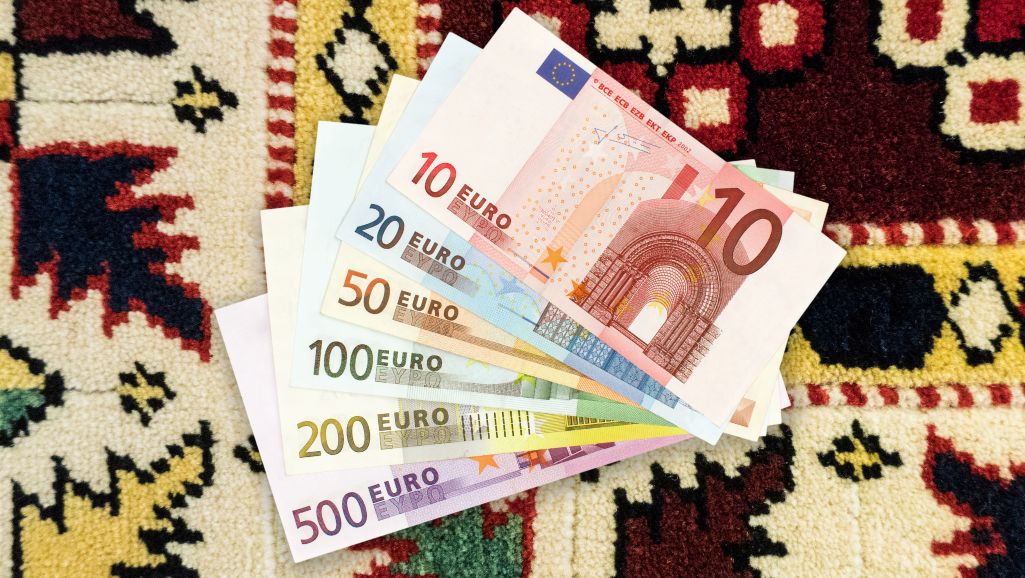The true cost of tufting no one will tell you
Are you considering taking up tufting, but not sure if this hobby will cost you a fortune? What is the real cost of starting tufting and can this artistic interest become affordable for you? Or can tufting even be profitable for you? In this article, we'll explore all the costs associated with starting tufting, from basic equipment to materials, and offer tips on how to save money and how to even make money.

Is it expensive to start tufting?
Let's break down the cost of starting tufting in euros, adding that tufting doesn't have to be very expensive when you purchase from a verified seller offering quality products at fair prices. Otherwise, the text remains largely unchanged.
- Essentials:
- Tufting gun: €160-€290
- Fabric: €60-€130, mostly depending on the amount
- Frame: Can be built yourself or purchased starting at around €10
- Yarn: You can use leftover yarn or buy budget-friendly options. Estimate €90 for starters.
- Other supplies: Glue, scissors, etc. - minimal cost.
- Starter kits are available for around €300, which can be a good option to get everything you need at once.
- Total cost to start: €320-€520 is a ballpark figure, but you can definitely spend less by using scrap materials or buying a used tufting gun. However, it's certainly worthwhile to make this investment, which is not that significant in the end, rather than working with poor quality, old, or non-functional tools. By purchasing from a verified seller with quality products at fair prices, you can ensure that tufting remains an accessible and affordable hobby.
Here are some ways to save on costs in euros:
- Use a punch needle: This is a much cheaper alternative to a tufting gun, but creating rugs will take much longer.
- Buy wool yarn scraps or acrylic yarn: Wool offers superior quality, but acrylic yarn is a budget-friendly option for beginners at around €5-€10 per skein.
- Build your own frame: Wood and mesh can be inexpensive materials for a simple frame.
Non-essential tools
While the above items are non-negotiable, there are other tools and materials that, while not essential, can enhance your tufting experience or add versatility to your projects. Among these are also rug trimmers, a specialized tool designed to provide an even and precise trim to your tufted projects, ensuring a professional finish every time. Additionally, specialized scissors, additional fabric types for experimentation, or advanced tufting guns with more features could also be considered. Though not necessary, these extras can expand the possibilities of what you can create.
How much does it cost to make a rug?
When you start tufting, the amount of money you need can change based on a few things. If you get everything you need by yourself, it can cost between €320 and €520 as mentioned before. This price can go up or down, depending on where you buy your stuff. There's also an easier option called a starter kit, which costs about €300.
This kit has everything a beginner needs to make a tufted rug, and it might save you some money and time because you won't have to look for each piece separately.

Making a tufted rug can cost differently because of how big it is, what materials you use, and how complicated your design is.
Usually, it might cost between €40 and €200 for every square meter of the rug. The price changes if you choose fancy materials like high-quality wool or if your rug design has a lot of details. The more complex and detailed the rug, the more it costs.
The money you spend on making the rug also depends on who makes it. If a skilled person does it by hand, it will cost more than if a machine does it. Also, the type of yarn matters. Fancy yarns like wool or silk are more expensive than man-made fibers.
In simple words, the cost to start tufting can vary a lot. It can be cheaper if you choose a starter kit. The final price for making a rug also changes based on its size, materials, and how complex it is. On average, making a tufted rug can cost between €40 and €200 per square meter.
Time investment in hand tufting a rug
The amount of time you'll spend making a tufted rug really depends on a few things.
First, how complicated your rug design is can make a big difference. If you're planning a rug with lots of details and colors, it's going to take more time than a simple one-color design. The size of the rug matters too; a large rug takes longer to complete than a small one.
If you're just starting out with tufting, you might feel like it's taking a long time to finish your rug. This is pretty normal because you're still learning how to use the tufting gun and getting the hang of all the techniques.
But don't worry, as you get more practice, you'll get faster at tufting. It's kind of like learning to ride a bike—tricky at first, but much easier with practice.
Another thing to think about is how good you want your rug to look. If you're aiming for a rug that's really high quality, with lots of attention to detail, you'll need to spend more time on it. This extra time lets you add in all those special touches that make your rug unique.
Making tufted rugs is a creative craft that can be really rewarding. Each rug you make is a chance to express yourself, try out new ideas, and learn something. The more you tuft, the better you'll get at it, and the less time it'll take. Plus, seeing your own beautiful rug come to life is a great feeling. It's all about putting in the time to create something special that you're proud of.
Our recommendation: Read also how to use tufting tools like a pro.
Pricing strategies for tufted rugs
Many tufters choose to sell carpets, often focusing on customized pieces as the customer demands. But how do you price your work? It's crucial to strike a balance when pricing your tufted carpets. You need to take into account the cost of the materials you've used, the hours you've poured into making each piece, and how unique and creative your design is.
A solid approach to pricing is to first add up all the costs of your materials. Once you have that number, consider doubling or tripling it. This extra margin isn't just profit; it's recognition of the time you've dedicated and the creativity you've put into your work.
But here's where things get a bit tricky: you also need to look around and see what similar items are selling for. Doing a bit of market research helps you understand where your work fits in the broader market. You want your prices to be competitive enough to attract buyers but also high enough to reflect the quality and effort that went into making your rugs.
Remember, each carpet you tuft is more than just a product; it's a piece of art that reflects your unique style and creativity.
.jpg)
And while it's important to be paid fairly for your work, setting the right price also means considering what your target audience is willing to pay for something special and one-of-a-kind.
Whether it's a vibrant splash of color for a modern living room or a custom design that tells a story, your tufted carpets have a value that goes beyond the material costs. So, when pricing your work, think about the joy and beauty it will bring to someone's home, and use that as a guide to find the perfect price point.
Conclusion: Is tufting an expensive hobby?
Tufting doesn't have to be an expensive hobby if you know how to do it. You may encounter initial costs ranging from 320 to 520 euros, depending on how you approach the purchase of materials and equipment. The answer to the question of whether tufting is an expensive hobby is therefore not entirely clear-cut. It is possible to start tufting at a reasonable price, especially if you take advantage of options such as buying a starter pack or using leftover materials. In addition, the cost of making a single rug can vary depending on the size, materials and complexity of the design, usually ranging between 40 and 200 euros per square metre. In this article, we have explored different ways to keep tufting costs within reasonable limits, and shown that with a little creativity and effort, tufting can be an accessible and rewarding hobby.
